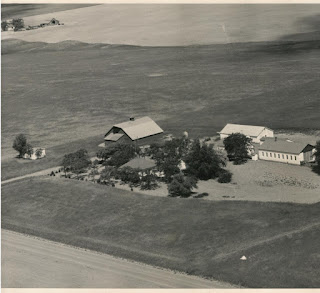Can we be like the Boys in the Boat?
The winter wind can be bone-chilling at Ediz Hook, a 3-mile-long sand spit, along the waterfront of Port Angeles. I wore a heavy coat and scarf. I had agreed to meet John Halberg—a local rowing enthusiast at the aged boathouse that was part of his vision for the future. We both shared a mission to help youth.
In a financially strapped region still emerging from its former logging days, there were plenty of youth needing hope and direction.
John found the key in his coat pocket and opened the broad doors that revealed shiny kayak-like boats. This was my first glimpse into the world of rowing. John had been a University of Washington crew member before I was born. He then coached college teams. He knew the discipline required and the intensity of competition. Now he saw it as an opportunity for rural kids too.
But like most things, it came with a cost. Hence our meeting. We talked about potential grants and fundraising efforts. The boathouse required repairs, new boats (or shells as they are more accurately called) were needed.
John was a community volunteer who had recently been honored with the county-wide Community Service Award. He’d coached youth sports for years, volunteered thousands of hours, spent a couple decades on our local school board, and at 75 didn’t intend to slow down. He still rowed—and he wanted our local kids to have the chance as well.
As he locked the double doors of the old building, he turned towards me said, “Have you read the Boys in the Boat?”
I hadn’t.
“If you read it, you’ll understand the potential.”
So, in 2013, I read Daniel James Brown's new book, the Boys in the Boat, about a group of college men in 1936—each desperate and determined to make their way during a hard time in our nation’s history. No one thought the junior varsity underdogs could win. But their coach saw their tenacity and believed in them. He helped those boys believe in themselves. Then they made history by pulling together to accomplish what seemed impossible. It’s a powerfully inspiring story. Joe Rantz, one of the desperately poor boys in the boat, had lived just 15 miles from where John and I had talked.
 |
| Joe Rantz (Pinterest) |
John knew that if youth were given opportunities, they could succeed in ways they didn’t expect. Sadly, in 2017, John suffered a fatal heart attack, but his son, Sean, took over the Olympic Peninsula Rowing Association in his father’s honor. Today, even elementary children are learning to row. John Halberg knew that it took a team pulling together to win—and the youth program he envisioned is winning. I’m thankful for his inspiration to me and so many others.
But this idea of pulling together goes way beyond sports. For instance, this next year, my sister is going to help an organization that needs drivers to get people to and from work. People getting a new start in life need a ride. Pulling together.
A friend is collecting clothes to help those who need them. Pulling together.
Another is coaching, while another mentors a youth needing guidance.
Some grow food to give away, others glean crops from orchards and farms and fill food pantries.
In every place there are those hard at work in jobs, raising families, volunteering, and pulling together in their own communities. Yes, we can be like the boys in the boat.
As the boy’s coach told them before heading out to compete for the Olympic Gold, “Row for your country, row for each other.” They had learned to pull together. So can we.
Happy New Year! Let’s pull together for our country and for each other.
Photos from Kristin Halberg.
Betty and John Halberg
Family Rowing Picture: Betty (mom) is coxing, then, John Halberg (dad), Christine, Greg, Sean, Kristin, Jim, Jen, & Karen.





